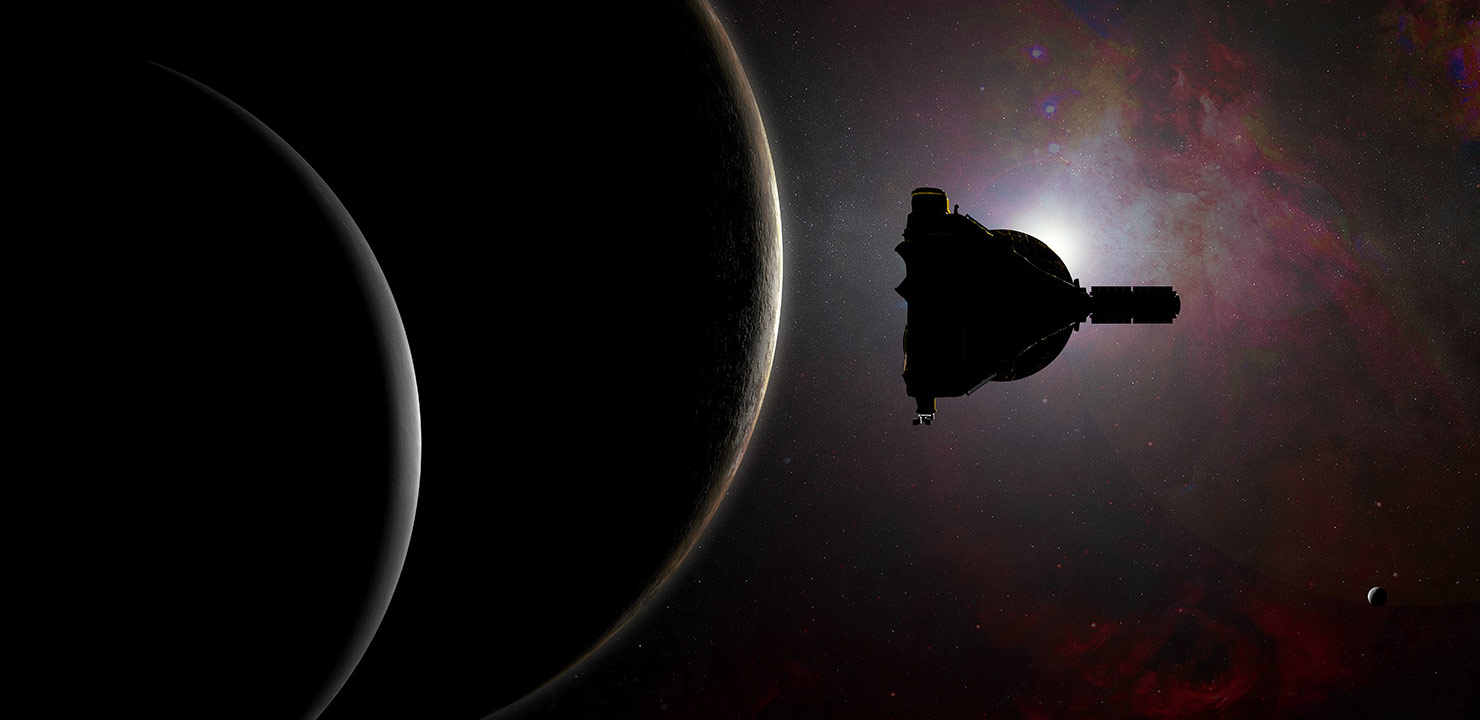
Celebrating the Pluto Encounter
June 2015 :
Sometimes it seems we can grow old waiting for events to happen in science; but, then, when it occurs, it’s as if it began yesterday, such as, for example, New Horizon, which is finally about to perform its magic on our outer neighborhood object Pluto.
Launched the same year Pluto received its demotion as a full-fledged planet, New Horizon left Earth on January 19th, 2006, and except for a trial run at Jupiter to test its main equipment, has not been doing an awful lot. While passing by Jupiter, however, the fairly small craft returned information on our largest planet’s atmosphere, magnetosphere, and some of its satellites. Jupiter also aided in the continuation of New Horizon’s trip, giving it a gravity assist, which increased its velocity by about 9,000 miles per hour.
From that short stint at Jupiter to just a few months ago, New Horizon had been hibernating, saving itself – except for minor checks – until, this past December, it returned to working mode, in anticipation of its historic pass around one of our more elusive solar system bodies.
First discovered in 1930 by Clyde Tombaugh – who, after telling his boss, took the rest of the day off – most of Pluto’s information was pure conjecture. Other than its distance from the Sun, which gave us its revolution time, all other information was beyond our comprehension – until 1978, when James Christy, utilizing a new form of equipment for astronomy, a computer, announced the discovery of a satellite that, not only orbited exceedingly close to Pluto, but was half the planet’s diameter. Charon, in one swift moment, began what was to be finalized in 2006 – the demotion of Pluto as a full-fledged planet, and the introduction of a new solar system category: Dwarf planet.
Formally the only “planet” not to have been visited by spacecraft, Pluto is now the second dwarf planet that will have its surface identified. We can’t forget Ceres, which is being orbited by Dawn, and will be for the next several months. Pluto’s mission, however, is merely a flyby. Its mission has already begun, but hold your breath for the real close-up date in mid-July. We at Seagrave are planning on having a celebration of this historic event, on July 18th, so please, mark your calendars. For those of us waiting what appeared to be forever for this event, or for you young astronomy lovers who were barely born when New Horizon was launched from Earth, this is one mission we can’t afford to pass up. We will publish the details very soon.
NASA/Johns Hopkins University Applied Physics Laboratory/Southwest Research Institute/Steve Gribben/Alex Parker
Artist's concept of the New Horizons spacecraft encountering Pluto and its largest moon, Charon (foreground) in July 2015. The craft's miniature cameras, radio science experiment, ultraviolet and infrared spectrometers and space plasma experiments will characterize the global geology and geomorphology of Pluto and Charon, map their surface compositions and temperatures, and examine Pluto's atmosphere in detail.



